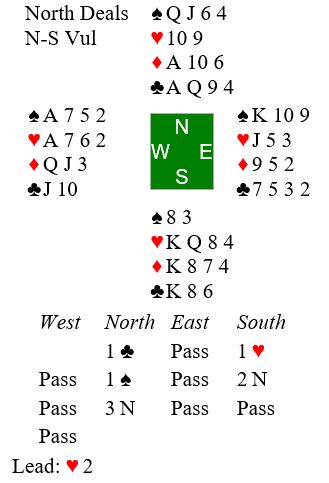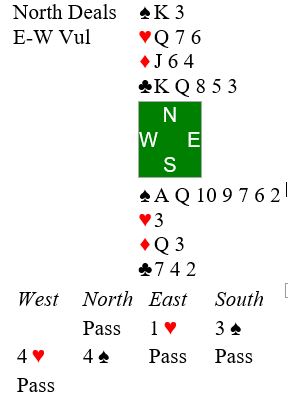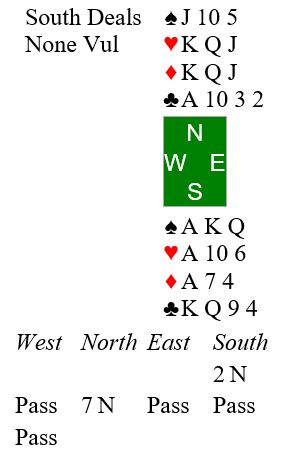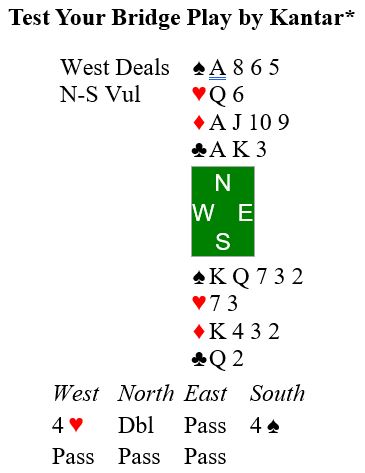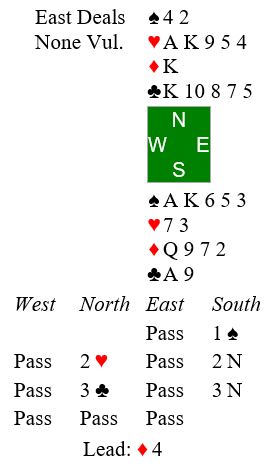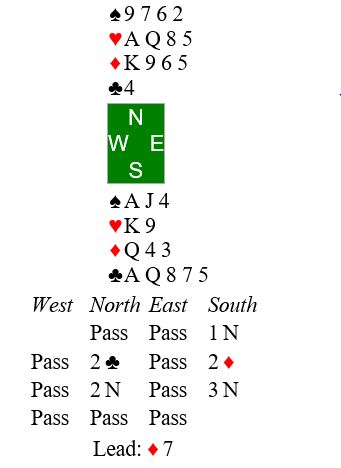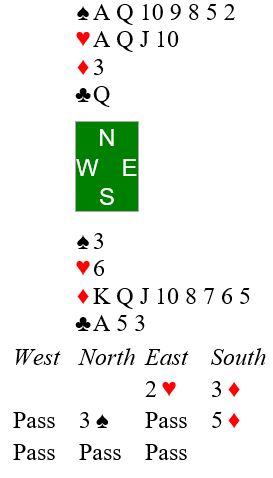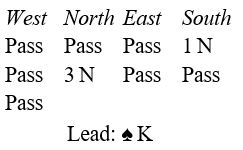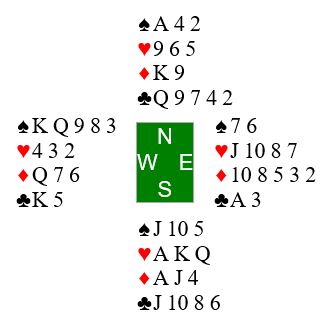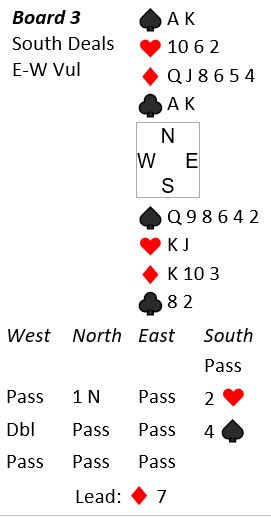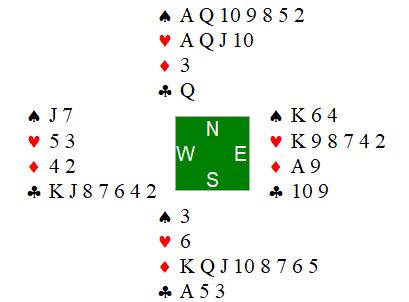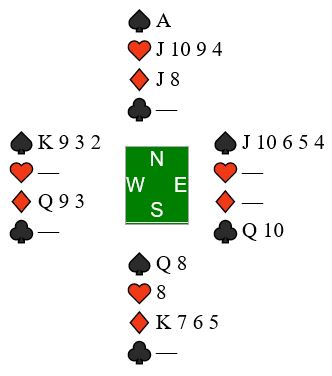You are South, having ended up in a contract of three hearts. East opened the bidding in 1st seat with one spade, and you overcalled two hearts. From there it was an interesting competitive auction, during which West and North indicated weak hands by their reluctance to bid. West leads the king of spades. Here is what you see, including details of the auction:
Trick 1: You won the ace of spades.
Trick 2: You cashed the ace of hearts.
Trick 3 you gave up a spade to East.
Trick 4 East then cashed the king of hearts, West discarding the deuce of diamonds. (See details of 1st 4 tricks above.)
At trick 5 East shifts to the three of clubs. It’s your turn: Use clues from the bidding and play to decide which card to play from hand. Scroll down to see the solution.
Solution: You know from the auction that East has the ace of clubs. Play the queen of clubs and it wins. Once you get to dummy again you will lead another club, putting in the king if East follows low. You are assured of two club tricks, knowing that the ace of clubs is onside.
